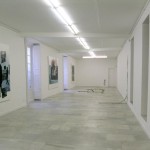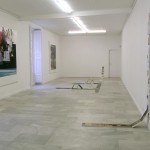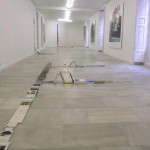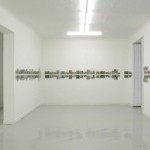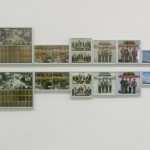SANDRA GAMARRA (Lima, 1972)
From January 19 to February 20, 2010
In Order of Appearance refers to the usual way film credits are presented, where an order determined by narrative appears to be random. Likewise, the news in the press, the novelties on the web, the works in an exhibition answer to an order to which we do not always have access to.
Art yet another component in the incessant flow of information in our societies. It could be thought that the “appropriate” space from which to see, experience and reflect on art no longer exists.
We are, moreover, up to the task of erasing those limits and turning art into an increasingly close-to-hand experience, and as such, expose it to that flow which grows and advances, taking the limits with it, constantly modifying them.
With such a prospect, where can spaces for reflection and critique be found? At a time when we are looking for greater involvement with the work from the spectator, we perhaps forget that this involvement, this intervention from the spectator does not only take place in front of the work, but maybe precisely in those spaces for reflection too. Or have we taken it for granted that nothing exists after the experience, that transitional spaces are totally lost, that immediacy is the only alternative?
In Order of Appearance is made up of a fabric of 3 projects in which painting is the common thread to present possible moments of this prospect.
The information disseminated en masse radiates a halo of truth among those who share it, although we know it is the result of a selection which always involves discarding.
This flow moreover seems to arrive in a random and disordered way, and even though in theory the order of the parts should not alter the product; in a system in which information is stored rather than processed, this order can determine its meaning.
With the press images and their doubles reflected in painting, this order is broken and is reorganised in its reading. An attempt is made to point to the uses, coincidences and strategies underlying their multiplicity. By removing the text they illustrated, the press images (including reproductions of art) organise themselves; iconophilia, iconoclasm, drama, still life, the mediated image, the portrait, duplicity, the spectator, reflection and backlighting all appear as themes.
The selection criteria outlines the levels of depth in the press image and allows it to be worked on in an almost sculptural way, that is, the appearance of its double creates a spatial and temporal space from which we can look at it again.
 English
English 